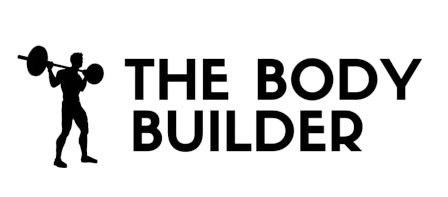Back Flyes – With Bands
Back flyes with bands is an effective exercise for targeting the posterior deltoids, or back of the shoulder. This exercise involves running a band around a stationary post, grabbing the band by the handles, and standing back to create tension. With your arms straight and parallel to the floor and your feet firmly planted, you then move your arms to the sides and back, keeping them extended and parallel to the floor. Once you have paused, you move back to the original position. This exercise can also be performed on a rear delt machine or using a pulley machine for variation.
Type:
Strength
Muscles Used:
Shoulders
Level:
Beginner
Equipment:
Bands
Benefits Of This Exercise
- Strengthens the posterior deltoids (back of the shoulder)
- Improves shoulder stability and mobility
- Increases range of motion
- Helps to protect against injury
- Can be performed using bands, a rear delt machine, or a pulley machine
- Can be used as part of a warm-up routine
- Can be used for rehabilitation purposes
Step by Step Instructions For Back Flyes – With Bands
- Place a band around a stationary post, such as a squat rack, ensuring it is secure.
- Take hold of the band’s handles and step back, creating tension in the band.
- Stand with your feet shoulder-width apart, firmly planted on the floor.
- Extend your arms straight in front of you, parallel to the floor and perpendicular to your torso. This will be your starting position.
- Exhale as you move your arms out to the sides and back, keeping them extended and parallel to the floor. Continue until your arms are fully extended to your sides.
- Pause briefly, then inhale as you return to the original position.
- Repeat this movement for the recommended number of repetitions.
Variations: If available, you can also perform this exercise on a rear delt machine or using a pulley machine.
Warm Up Tips
- Run a band around a stationary post like that of a squat rack.
- Grab the band by the handles and stand back so that the tension in the band rises.
- Extend and lift the arms straight in front of you. Tip: Your arms should be straight and parallel to the floor while perpendicular to your torso. Your feet should be firmly planted on the floor spread at shoulder width. This will be your starting position.
- As you exhale, move your arms to the sides and back. Keep your arms extended and parallel to the floor. Continue the movement until the arms are extended to your sides.
- After a pause, go back to the original position as you inhale.
- Repeat for the recommended amount of repetitions.
Variations: You can perform this exercise on a rear delt machine as well or using a pulley machine.
Back Flyes – With Bands Safety Tips
- Choose a sturdy and stable stationary post to secure the band.
- Make sure the band is securely attached to the post and the handles are properly fastened.
- Stand at a safe distance from the post to create tension in the band, ensuring it is not too loose or too tight.
- Maintain proper form throughout the exercise by keeping your arms straight and parallel to the floor.
- Engage your core and keep your feet firmly planted on the floor at shoulder width for stability.
- Control the movement and avoid using momentum to prevent strain or injury.
- Breathe properly by exhaling as you move your arms to the sides and back, and inhaling as you return to the starting position.
- Start with lighter resistance bands and gradually increase the tension as your strength and stability improve.
- Listen to your body and stop the exercise immediately if you feel any pain or discomfort.
- Perform the exercise in a well-lit and spacious area to avoid tripping or bumping into objects.
Incorporating Into Other Workouts
Back flyes with bands can be incorporated into workouts as a targeted exercise for the posterior deltoids. Here's how you can include this exercise in your routine:
1. Warm up: Before starting your workout, make sure to warm up your shoulders and upper body with some dynamic stretches or light cardio.
2. Set up the band: Run a band around a stationary post, such as a squat rack, at chest height. Make sure the band is securely attached and won't slip during the exercise.
3. Grab the handles: Stand facing the band and grab the handles with an overhand grip. Step back until you feel tension in the band. Your arms should be extended straight in front of you, parallel to the floor.
4. Starting position: Plant your feet firmly on the ground, slightly wider than shoulder-width apart. This will provide a stable base for the exercise.
5. Perform the movement: Exhale as you move your arms out to the sides and back, keeping them extended and parallel to the floor. Imagine squeezing your shoulder blades together as you perform the movement. Continue until your arms are extended to your sides.
6. Pause and return: Hold the position for a brief pause, feeling the contraction in your posterior deltoids. Inhale as you slowly return to the starting position, keeping control of the band's tension throughout the movement.
7. Repetitions and sets: Repeat the exercise for the recommended amount of repetitions, typically 10-15 reps per set

